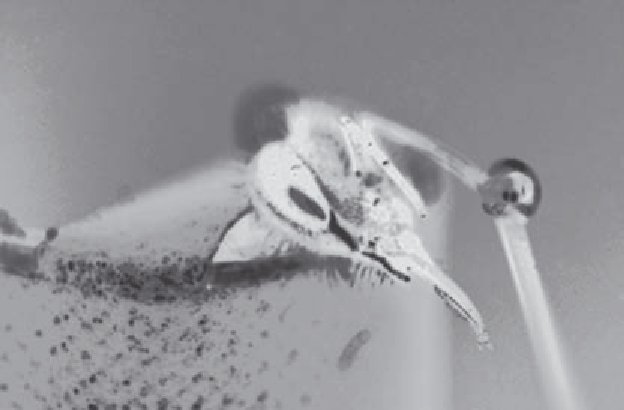Biology Reference
In-Depth Information
of sucrose solutions. When we went to collect the foragers, we decided
to do an experiment and compare pollen and nectar foragers ( just for
fun). We did not think that they would actually be dif erent. We were
surprised to i nd that the pollen foragers responded signii cantly more
Figure 2.7.
Proboscis extension response test of sucrose sensitivity. A
sucrose-solution concentration series was prepared, usually with concentrations
of water only and 0.1, 0.3, 1, 3, 10, and 30 percent sucrose. Bees were placed in
coni ning tubes with their heads exposed. Droplets of the dif erent solutions
were touched in increasing concentrations to each antenna to stimulate the
extension of the proboscis. h e response threshold was estimated by the lowest
sugar concentration that resulted in the extension of the proboscis. We ot en also
refer to “the responsiveness of the bee.” Responsiveness is just another way to
talk about response thresholds because bees do not respond to sugar solutions
with concentrations below their threshold and respond to all or most solutions
above it. A count of the total number of times they respond is a measure of their
responsiveness and indirectly their response threshold. We call the total count
the gustatory response score (GRS). A high GRS corresponds to a low response
threshold, and vice versa. Photo by Jochen Erber. Reprinted from
Current
Topics in Developmental Biology
74, Page et al., “h e Development and Evolution
of Division of Labor and Foraging Specialization in a Social Insect (
Apis
mellifera
L.),” 253-286, Fig. 2 (2006), with permission from Elsevier.

